Recently, we checked our Logbook of the World (LotW) account, and discovered that we are very close to achieving a new milestone. Namely the 2000 points sticker on our DXCC Challenge plaque. The DXCC Challenge is an award which is issued to stations that have accumulated 1000 or more DXCC points. Points are awarded for working a new country (DX) once per band from 160 to 6 m (excluding 60 m). We are only 10-20 points away from the next sticker, and are excited to have something to work towards in the coming months.
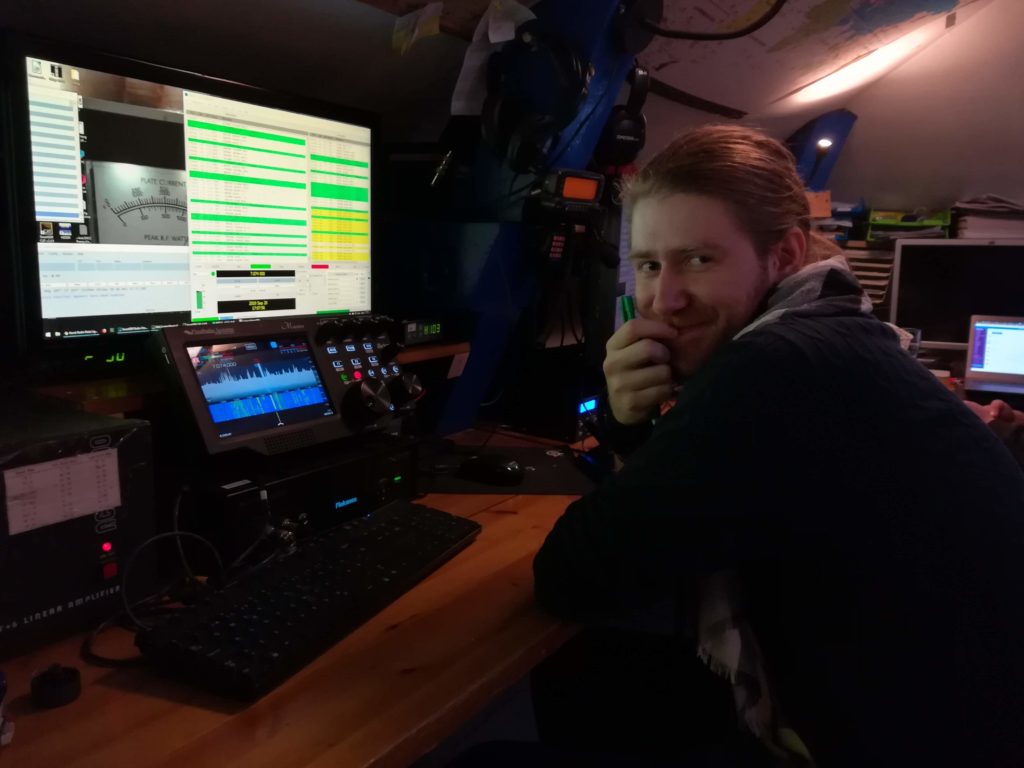
The endeavor is split two ways. Primarily we are hunting new DX on the bands, particularly the low bands as those are best for us in the current sun cycle. Secondly, we are trawling paper logs for potential new (old?) DXCC points. ARK is an old radio club, we’re nearly 100 years now – this means that we have a lot of history, and a lot of previously worked contacts. Digitalization is well underway, but we still have a number of QSOs in our paper logs that could be unregistered DX points. In fact, a recent trawl yielded almost 20 points.
To aid the first effort, we are looking to improve our capabilities on the lower bands. On 160 m we are particularly lacking, as it is a somewhat difficult band with our QTH. The main issue is that we snapped the end point of our 160 m dipole last year, and now we find it very difficult to climb the tree that held it. Turns out that trees can grow to be quite unaccommodating in “only” 10 years. More on this in another post once we solve the climbing issue.
To alleviate the 160 m withdrawal, we have temporarily strung up our portable dipole in an “inverted-V” from the top of the HF antenna mast. The quotation marks around inverted-V stems from the monstrosities that we had to enact upon the ends of the poor dipole. It is zig-zagged between the roof and snow catchers in order to fit within the extents of the Samfundet building. A compromise antenna is better than no antenna, and the tuner brings even this down to a decent 1.8:1 match, which should allow us to work some DX.
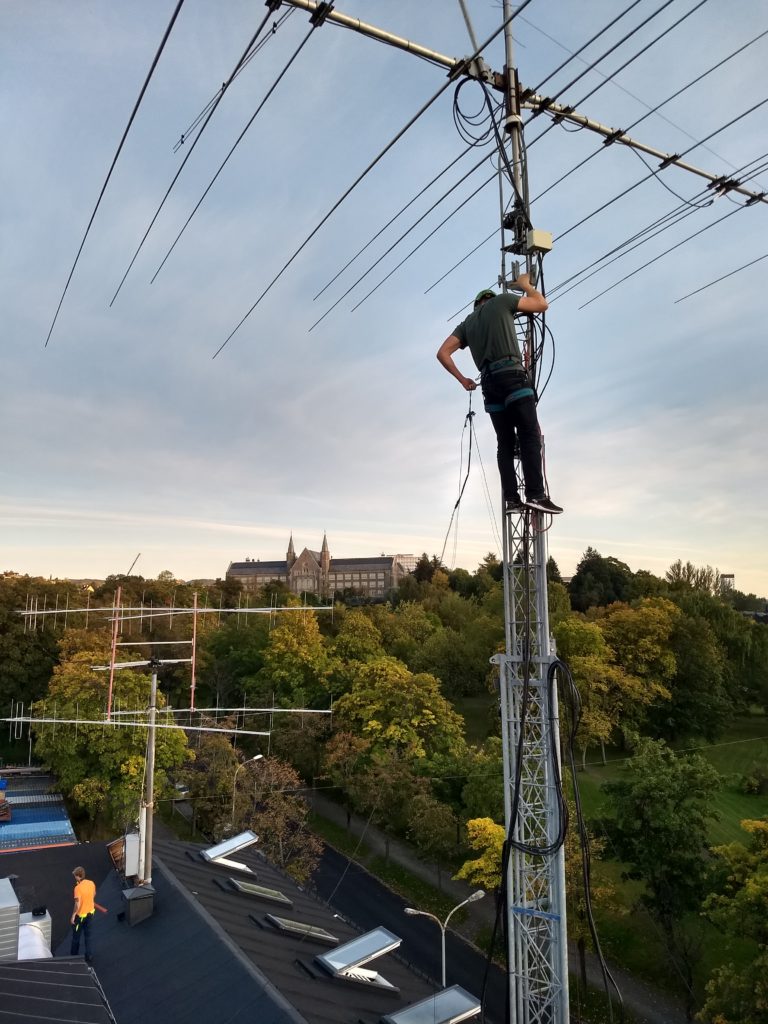
Arne LB4JI attaching the temporary 160 m dipole. Photo: LB5NI 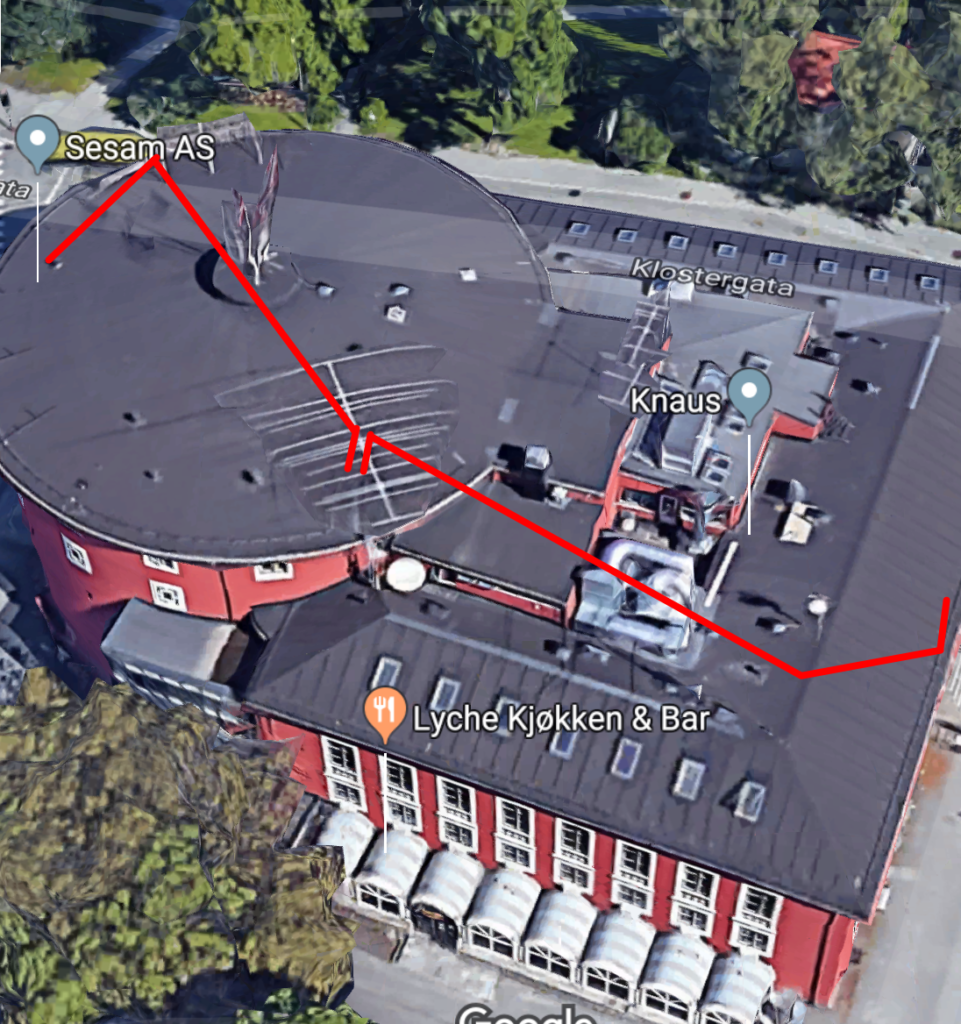
Rough sketch of the roughly placed 160 m “inverted-V”
Another venue that we are exploring is to deploy some form of RX-loop to help with noise on 160, 80 and possibly 40 m. From the available literature, we understand that these should provide considerable improvements to noise, even at less than a full wavelength. This would surely be helpful both for contesting, and hunting rare DX.
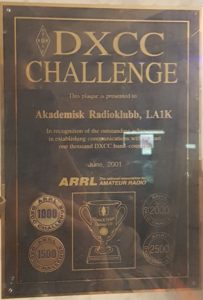
In the meantime we continue to pick contacts off the bands, and work through our old logs to see if they yield anything interesting. If things go as well as they have, particularly on 30 m, we should be able to add to cart a sticker in a couple of months.
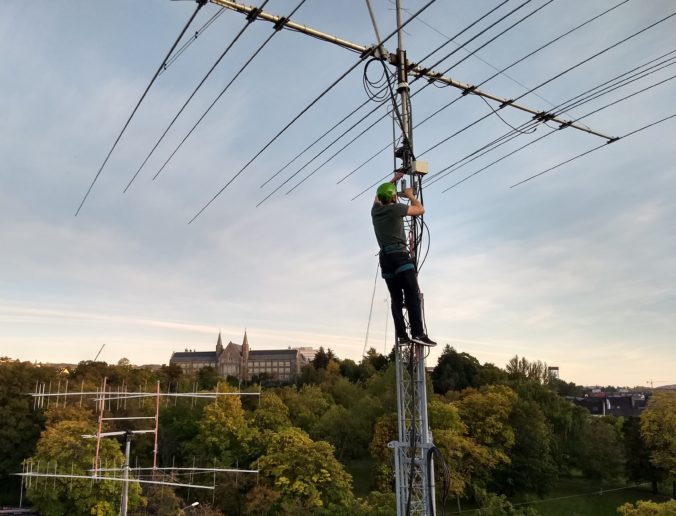

Leave a Reply